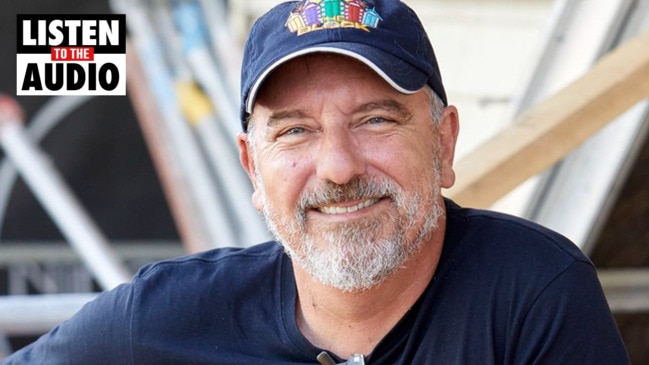High school headstart for teenage tradies in training
“It gives them a life of choice, not a life of chance.’’ How a high school is turning teenagers into tradies.

As new houses sprout in the forests and farmland of Queensland’s Sunshine Coast, a local high school is producing a crop of homegrown tradies.
Teenagers from 30 regional high schools attend Caloundra State High School one day a week to learn the basics of trades in short supply – from construction to mechanics, drone piloting and hairdressing.
The school has produced 2000 young tradespeople over the past decade, with most staying in their home towns to set up their own businesses.
This year 230 students graduated with a vocational training qualification, on top of their high school certificate.
Some, like 18-year-old Joshua Skogvold, have already found an apprenticeship with one of the 900 local businesses that offer work experience and jobs straight from school.

Having completed a Certificate II in electrotechnology with 80 hours of work experience at D&A Electrical, the star student has scored an electrical apprenticeship with Blue Wave Energy to learn his trade in electrical, solar and airconditioning installation.
“I’m really excited,’’ he said. “In the future I want to own my own business, after my apprenticeship.
“Electronics is the future in technology, and trades are always going to exist because so many houses need to be built.’’
Caloundra State High School principal Natasha Wicks said the pre-trade training offered students who might have tuned out of traditional schooling “a life of choice, not a life of chance’’.
The school adjusts its lesson timetable so students can spend an entire day in the trade workshop, equipped with cars on hoists, electrical stations and building frames.
Students attend standard school lessons on the other four days.
Caloundra High plans to add more trade sessions after-hours for teens from other schools who prefer to attend classes at night.
Ms Wicks said the technical trade training centre was keeping more young locals on the Sunshine Coast, rather than leaving for Brisbane to work or study.
At times, when Ms Wicks has called for a tradie to work at her home, a former student has landed on the doorstep.
“We’re growing our own,’’ she said. “We have a housing crisis so we can’t afford to bring more people to the area.
“And with the Olympics in 2032, there will be so much construction and we’ll need more tradies.’’
Sunshine Coast Chamber of Commerce chief executive Brady Sullivan said local businesses snapped up the graduates.
“It creates a better connection between industry and schools, so young people have the skills to learn trades quicker once they start employment,’’ he said.

“It’s very difficult to find anyone for any job, so this pathway that helps employers to find skilled young people is really advantageous for the region.
“Previously you would see a significant brain drain from rural and regional areas – that’s devastating for a region because it’s a handbrake on opportunities to grow.’’
In an innovative strategy to be shared with other states and territories at the next national meeting of skills ministers, Queensland is developing training hubs that align to local business needs.
Schools can partner with employers and industry groups to offer training, work experience and traineeships in 10 sectors including agriculture, construction, tourism and aerospace.
The concept extends to TAFE (technical and further education) colleges, which match course offerings to industry needs.
In Hervey Bay, a magnet for retirees requiring health care, the local TAFE college specialises in nursing and allied health.
Aquaculture is the speciality at Bowen TAFE, while in Townsville training is targeted to the hydrogen industry and the Gold Coast campus focuses on nursing, beauty and hairdressing.
“There are labour shortages everywhere and we need people to stay in their own regional centres,’’ Queensland Employment, Small Business, Training and Skills Development Minister Di Farmer said yesterday.
“We’re linking industry into schools to give students a taste of what jobs are like, so they’re more likely to make the right career choice and stay the distance.’’








To join the conversation, please log in. Don't have an account? Register
Join the conversation, you are commenting as Logout